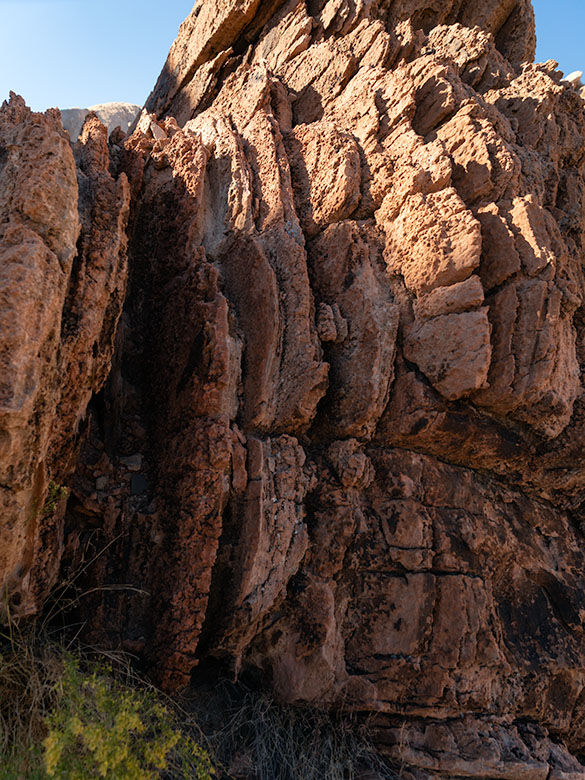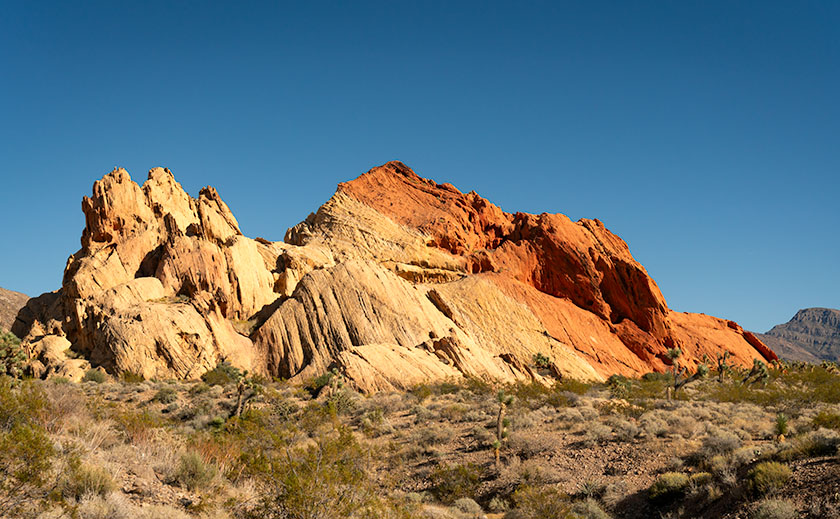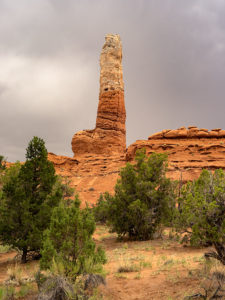
Arriving at a new location like Gold Butte ignites a whirlwind of excitement in me, and my initial instinct is to capture everything in sight. This flurry of photography is more about immersion than precision, leading to a digital pile-up that I inevitably sift through, discarding the excess like chaff. Unlike the costly days of film, where each shot was a precious commodity, the digital age allows me to indulge in this initial creative outburst, knowing it’s part of reaching the true gems.
Once the initial rush subsides, I transition from capturing to contemplating, delving into the ‘why’ and ‘how’ of the landscape before me. It’s here that Shawn Willsey’s geology videos come into play. As a professor at the College of Southern Idaho, Shawn has a gift for demystifying the complexities of earth science, guiding even the uninitiated through geological wonders. His explanations, particularly his Random Roadcuts segments, clarify unusual layering and erosion and bring a new depth to my photographs, transforming them from mere images to stories set in stone.
From a distance, the formation in the picture above looked like the blades of a turbine engine embedded in the Navajo Sandstone. For all I know, there is a 747 out there with the guts missing from one of its engine cowlings. The brown color, multi-layers, with rounded edges, stood out like the red marks on one of my term papers. How can I tell you about it when I haven’t a clue? So, I emailed Professor Willsey and asked if he’d look at my photo—and he accepted. He answered, “The feature in question is not a vein but appears to be an upturned section of Aztec (Navajo) sandstone. The near vertical layering is the cross beds deposited on the dune field’s backside (downwind) side. Some faults and other structures in this region of NV are likely the culprits that have tilted the rock layers. Very cool.” Then, he returned to hosting his live coverage of this week’s Iceland eruptions. Now, don’t you feel smarter?

There’s a question in this week’s other picture as well. It’s an image of a sandstone formation that looks like a bowl of Neapolitan ice cream after Queen Anne was done with it. I say that because Queen Anne always eats the chocolate and turns her nose up at the rest. The issue is that the red section appears on the white layer. From all I’ve read, the Entrada era—with its rust-colored sandstones—came before the white dunes. My best guess is that the forces that lifted the Virgin Mountain Range over a mile in the air also jumbled the natural order in this basin. What are your thoughts?
I have posted larger versions of Geologic Puzzle on my website < Jim’s Web> and my Fine Art America page <FAA Link> should you want to examine the layers closer. Next week, we wrap our foray into Gold Butte National Monument with one of the rare evidentiary remnants that anyone preceded us. It’s like unearthing the Spinx. Join us then, won’t you?
Until next time, keep your spirits high and your humor dry.
jw
BTW:
As we gather to celebrate the holiday season, Queen Anne and I would like to extend a hearty Seasons Greetings to all of you. Whether you’re out there chasing the perfect light or cozening up at home with loved ones, may your days be merry, bright, and filled with the joy of discovery. Here’s to capturing more beauty, sharing more stories, and creating unforgettable memories in the year ahead.

